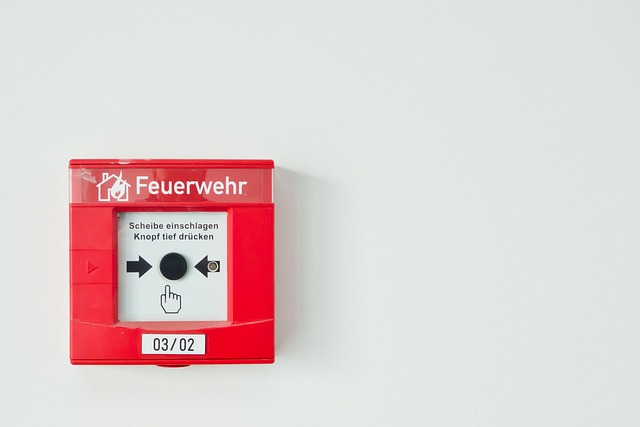
Fire Alarm System Enhancing IT Security with Smart Sensors
In modern enterprises, the safety of physical infrastructure and the integrity of digital assets are increasingly intertwined. A sophisticated fire alarm system that incorporates smart sensors can serve as a frontline defender against both accidental fires and intentional sabotage that targets critical IT equipment. By combining traditional fire detection with advanced data analytics, these systems transform a reactive safety measure into a proactive cybersecurity asset, providing continuous monitoring, automated alerts, and intelligent decision‑making that safeguards servers, networking gear, and the data they process.
The Growing Convergence of Physical and Digital Threats
Incidents in the past decade have shown that fire is no longer the only menace to IT infrastructure. Cyber‑physical attacks—such as deploying malware that triggers electrical faults or manipulating environmental controls—can ignite real fires, or they can disable fire suppression systems, letting a blaze spread unchecked. Consequently, fire alarm systems must evolve from simple smoke detectors to integrated security platforms that understand the digital context of the building. This convergence means that every sensor reading can be correlated with network logs, access controls, and incident reports to form a holistic threat picture.
Smart Sensors: The Technological Backbone
Smart sensors are the heart of modern fire alarm systems. Unlike legacy detectors that send a single binary signal, these devices capture multi‑parameter data—temperature, humidity, gas concentration, vibration, and even optical signatures—and encode it in standardized protocols such as KNX, BACnet, or Modbus. Advanced sensors now feature machine‑learning models that analyze patterns over time, distinguishing between ordinary combustion by‑products and hazardous anomalies. The ability to transmit data via IP networks allows a fire alarm system to feed directly into enterprise security information and event management (SIEM) platforms, creating a seamless bridge between physical and digital domains.
Data Fusion and Contextual Awareness
When a smart sensor registers a temperature spike, the system cross‑checks that value against neighboring sensors, recent HVAC adjustments, and scheduled maintenance windows. If the spike aligns with a sudden power surge reported by the building management system (BMS), the fire alarm system flags the event as a potential ignition source. Conversely, if the temperature rise occurs during a scheduled oven test, the system can suppress a false alarm. This contextual awareness reduces noise, ensures faster response times, and guarantees that the IT security team receives only actionable intelligence.
Predictive Analytics for Fire Prevention
Beyond real‑time detection, predictive analytics play a crucial role. Historical data on equipment failures, maintenance logs, and environmental conditions feed into algorithms that forecast the probability of a fire in specific zones. For instance, a server rack with repeated overheating events may trigger a preemptive shutdown, and the system will alert the operations center before the situation escalates. By integrating predictive insights with incident response playbooks, organizations can allocate resources more efficiently and prevent costly downtime.
Automated Response and Incident Escalation
Modern fire alarm systems now feature automated workflows that coordinate with IT security tools. When a sensor anomaly reaches a critical threshold, the system can automatically lock down affected VLANs, trigger redundant power supplies, or instruct the sprinkler network to activate only in the precise location identified. Simultaneously, alerts propagate to security operations centers (SOCs) via structured event feeds, ensuring that cyber‑security analysts are aware of the physical incident and can investigate potential upstream attacks.
Case Study: A Hypothetical Data Center Response
Consider a data center where a smart flame detector in a hot aisle flags an abnormal infrared signature. The fire alarm system cross‑references the event with the datacenter’s power usage data, revealing that a recent firmware update caused an unexpected power draw. The system automatically initiates a localized shutdown of the affected racks, instructs the fire suppression system to deploy a dry chemical agent in the aisle, and sends a detailed incident packet to the SOC. The SOC, meanwhile, inspects the firmware update logs for signs of tampering, concluding that the issue was benign. This coordinated response prevented data loss, minimized power interruption, and preserved confidence in the facility’s resilience.
Integrating with Building Automation and Security Infrastructure
For fire alarm systems to truly enhance IT security, they must be tightly integrated with the building’s automation layers. By embedding fire sensors into the same network as access control, CCTV, and environmental monitoring, security teams gain a unified view of the premises. Integration with SIEM platforms allows correlation of sensor alerts with intrusion detection logs, enabling analysts to determine whether a fire is accidental, accidental after an intrusion, or a deliberate act of sabotage. This synergy creates a multi‑layered defense that is both reactive and proactive.
Regulatory Compliance and Documentation
Many industries—finance, healthcare, and government—require rigorous documentation of fire safety measures. Smart fire alarm systems automatically archive sensor data, response actions, and system diagnostics, producing audit trails that satisfy standards such as ISO 27001, SOC 2, and local fire codes. Automated reporting reduces the burden on compliance teams and ensures that evidence of proper response is available in the event of an investigation or insurance claim.
Challenges and Practical Considerations
Despite their benefits, deploying smart fire alarm systems in IT environments poses challenges. Connectivity reliability is paramount; if network segmentation isolates critical sensors, an alarm may never reach the SOC. Privacy concerns arise when sensors capture video or audio, requiring strict access controls and encryption. Additionally, the complexity of integrating legacy equipment with new protocols can drive up costs. Organizations must conduct a comprehensive risk assessment, weigh the return on investment, and design phased rollout plans to mitigate disruptions.
Vendor Selection and Interoperability
Choosing a vendor that supports open standards and offers robust APIs is essential for long‑term scalability. Interoperability ensures that as new sensors or security tools enter the environment, the fire alarm system can seamlessly incorporate them without requiring a full replacement. Building a modular architecture—where sensors, network interfaces, and analytics engines can be upgraded independently—provides resilience against obsolescence and facilitates continuous improvement.
Emerging Trends in Fire Alarm and IT Security Integration
Artificial intelligence is pushing the frontier of fire detection. Deep learning models can differentiate between combustion types—such as a slow, smoldering fire versus a rapid, high‑intensity blaze—by analyzing multi‑sensor patterns. Edge computing allows initial processing to occur on the sensor itself, reducing latency and ensuring that critical alerts are transmitted even during network outages. Moreover, blockchain‑based logs can guarantee tamper‑proof recording of fire events, providing irrefutable evidence for forensic investigations.
Future Outlook: Zero‑Trust Physical Infrastructure
The zero‑trust paradigm is expanding beyond cyber realms into physical spaces. By treating every sensor, access point, and environmental control as a potential threat vector, zero‑trust physical infrastructure enforces continuous verification and least‑privilege principles. Smart fire alarm systems are integral to this model, providing continuous authentication of environmental conditions, real‑time verification of suppression actions, and automated isolation of compromised zones—all while maintaining compliance with stringent security standards.
Implementing a Smart Fire Alarm System: A Practical Roadmap
- Assess current infrastructure: inventory existing sensors, network topology, and security tools.
- Define integration points: map how fire data will feed into SIEM, SOC dashboards, and BMS.
- Choose a vendor ecosystem that supports open protocols and offers modular upgrades.
- Deploy pilot sensors in a high‑risk zone: validate connectivity, data quality, and alert latency.
- Integrate analytics engines: configure predictive models, correlation rules, and automated workflows.
- Conduct joint fire‑drill exercises with IT security teams to test response protocols.
- Document procedures: create audit logs, incident response playbooks, and compliance reports.
- Scale rollout: extend sensor coverage, refine models, and continuously monitor performance.
- Review and iterate: schedule periodic reviews to incorporate new threats, technology updates, and regulatory changes.
Measuring Success
Key performance indicators for a smart fire alarm system include mean time to detection (MTTD), mean time to containment (MTTC), false‑alarm rate, and integration coverage percentage. By tracking these metrics, organizations can quantify the impact of fire‑aware security controls on overall resilience, and justify future investments in sensor upgrades or analytics enhancements.
Conclusion: A Unified Shield for Data and Facility
As enterprises continue to intertwine their physical and digital footprints, a fire alarm system that leverages smart sensors becomes more than a compliance requirement—it transforms into a core component of an organization’s security architecture. By fusing real‑time environmental data with cybersecurity analytics, these systems deliver predictive protection, automated response, and evidence‑based compliance. The result is a resilient environment where a sudden spark no longer threatens servers, racks, or the sensitive data they contain, but rather triggers a coordinated, intelligent defense that keeps the enterprise safe on both fronts.



